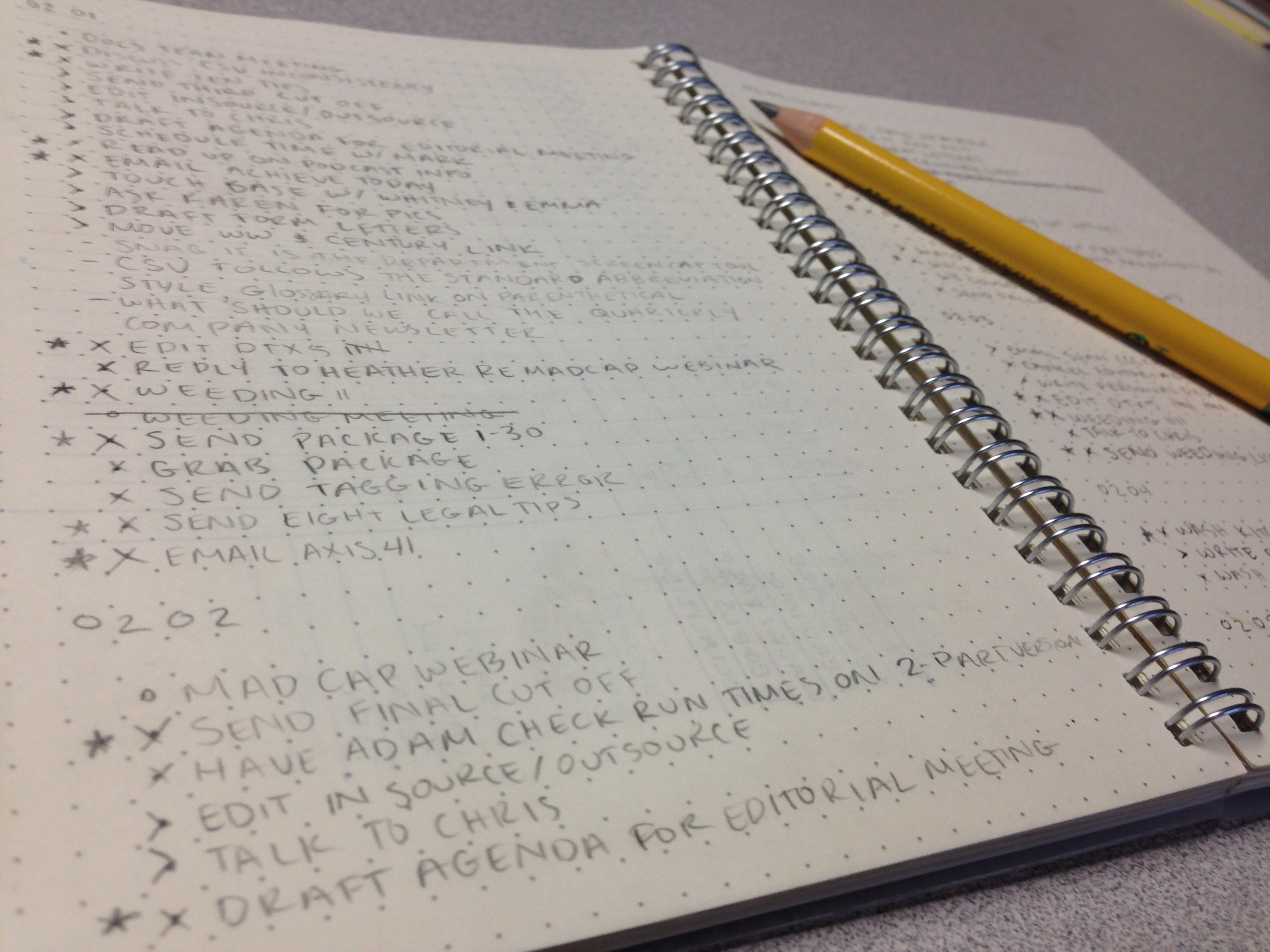SHARE
BULLET JOURNALING

Bullet Journals are incredibly hip right now. The #bulletjournal Instagram tag has over two million posts. The Bullet Journal subreddit has more than 72,000 subscribers. The trend is picking up steam and it fits right in with the world of direct sales because it helps you organize your professional life and it also helps you grow as a person.
If you’re not at all familiar with the concept of Bullet Journaling, it’s a combination of a to-do list, a planner, and a journal with a dash of art therapy on the side (if you’re into that). Much of what you’ll find if you go googling it is heavy on the art therapy—cute stuff gets more clicks—but the real power of the Bullet Journal is its ability to organize your life.
The Bullet Journal was invented by Ryder Carroll, who describes the process of creating the system as a personal battle against A.D.D. You don’t have to have A.D.D. to know the struggle of keeping a life in order or to benefit from the tools designed to work for even the most distracted among us.
Everyone has things they need to get done but most people don’t have a great way of keeping track of those things. If you can’t keep track of what you have to do, tasks and ideas tend to fall through the cracks. Losing track of your irons in the fire can mean losing income, opportunities, and relationships. Let’s take a look at the Bullet Journaling system—how it works and why it works.
Everything in one place
A Bullet Journal puts everything you need to keep track of in one notebook so you won’t need to dig around in your desk or purse or briefcase for that scrap of paper you jotted that contact’s info on. It’ll be in your Bullet Journal—and if you’re using it daily, you’ll always have it on hand.
In your Bullet Journal you’ll track important day-to-day information in a systematic way, but you can also use it for traditional journaling. The benefits of journaling are enormous. Finding the time for it is difficult. But with the Bullet Journal you’ll always have the tool on hand to work through your thoughts and record your experiences.
You can use literally any notebook for your Bullet Journal. Many enthusiasts have specific preferences for fancy notebooks and there’s even a branded Bullet Journal notebook you can buy. A lot of people (myself included) prefer grid notebooks (either graph paper or dot grids) because they make it easy for you to space your margins and bullets just right for your process. There are definitely things to consider when picking your notebook, but the truth is you don’t need an expensive notebook to get started.
Systematic logging
The core of the Bullet Journal is the systematic way that you take notes—called “rapid logging.” Each entry is a single short sentence with a bullet—so you have less to write and less to read later. You use different bullets to indicate different kinds of entries (a dot for a task, a circle for an event, and a dash for a note), and “signifiers” next to your bullets to indicate other details about an entry (a star for “important,” an exclamation point for “inspiration,” and an eye for “explore”).
You can customize your bullets and signifiers to suit your needs. The important thing isn’t what the bullets look like, but instead the fact that the system you follow is consistent from page to page. You want to be able to go back through your journals months later and know exactly what each symbol meant. In my mind, this systematic approach is the most important part of Bullet Journaling—it’s what takes you from ordinary notes that you’ll never bother to look back at to useful, mineable data on your own life. So whatever system you use, always include a key that you can refer back to later.
When a task is completed you cross the bullet out with an “X.” When you move a task forward to a new day you write over the original bullet with a right arrow (>). When you move a task to a specific future date in your monthly log or your future log (more on this in a minute), you write over the original bullet with a left arrow (<). When you decide that a task is no longer relevant you strike it out with a line all the way through the entry and the bullet.
Spreads & Modules
Everything in a Bullet Journal is done in “spreads” (any set of two pages which face each other) rather than “pages.” Each spread contains only one thing, so any time you open your Bullet Journal you’re looking at one layout for one topic. This is helpful for keeping you focused but it also allows you to keep personal entries out of view when you’re in a business setting and vice versa.
In addition to breaking things down into spreads, the Bullet Journal breaks down into “modules.” A module might consist of multiple spreads, but like spreads each module serves one core purpose. There are five kinds of modules:
Index. In the index you list the contents of your Bullet Journal with page numbers. Whenever you add something to your Bullet Journal you’ll add it to your Index as well. This makes it easy for you to find anything you’ve recorded at any point in the future. The index goes at the front of the notebook, so you should set aside a few spreads for it.
Future log. A future log lists upcoming months with spaces for you to add tasks and events to each. Maybe you have a retreat two months from now, maybe you’re going to a convention, or maybe you need to remember to reach out to someone at a specific future date—all of those things belong in the future log.
Monthly log. The monthly log consists of (1) a calendar page to which you can add tasks and events to specific days and (2) an open page for tasks, events, and notes which aren’t date specific.
Daily log. Daily logs are dated entries of rapid logging. You don’t need to flip to a new spread every time you start a new day—you can start on the very next available line—because the “topic” of these spreads is daily logging itself.
Collections. These are spreads set up to hold all of your notes on a specific topic or project. Collections can be anything you want them to be. You might start a collection for gathering notes about a specific product you’re selling or a downline distributor you’re mentoring. You could also start a collection for gratitude journaling or for tracking healthy habits you’re trying to form. The possibilities are endless.
If you ever run out of space in a spread and need to keep logging on that topic, just flip to the next empty spread, label it, keep logging, and then add the new spread’s page numbers to the topic’s entry in the index.
Infinite flexibility and personalization
The Bullet Journal helps you focus on exactly what you want in your life. In Ryder Carroll’s own words, “the beauty of the system is its flexibility. It can become whatever the user needs it to be.” In this industry, people march to the beat of their own drums. Bullet Journaling lets you do exactly that while helping you become more effective, more mindful, and more in tune with yourself.
“The Bullet Journal is more than a system; it’s a practice that provides clarity through focus and reflection.” -Ryder Carroll
you may also like
Essential Software Customizations for MLM, Direct Selling, and Affiliate E-commerce
Navigating the changing landscape of e-commerce, particularly within MLM, direct selling, and affiliate marketing channels, requires more…
How to Ensure Your Compensation Plan and Software Work Well Together
Peanut butter and jelly. Milk and cookies. Batman and Robin. Everybody knows these famous pairings work well…
Podcast 53: Advantages Using an Interim VP of Sales for Direct Selling Companies
Today we welcome a returning guest of this podcast: Jeff Jordan. Jeff has also written articles for…
compensation consulting for mlm companies
We offer data-driven compensation plan design & analysis
MLM.com Newsletter
Get our e-mail newsletter, with MLM.com articles & online exclusives, delivered to your inbox each week.





